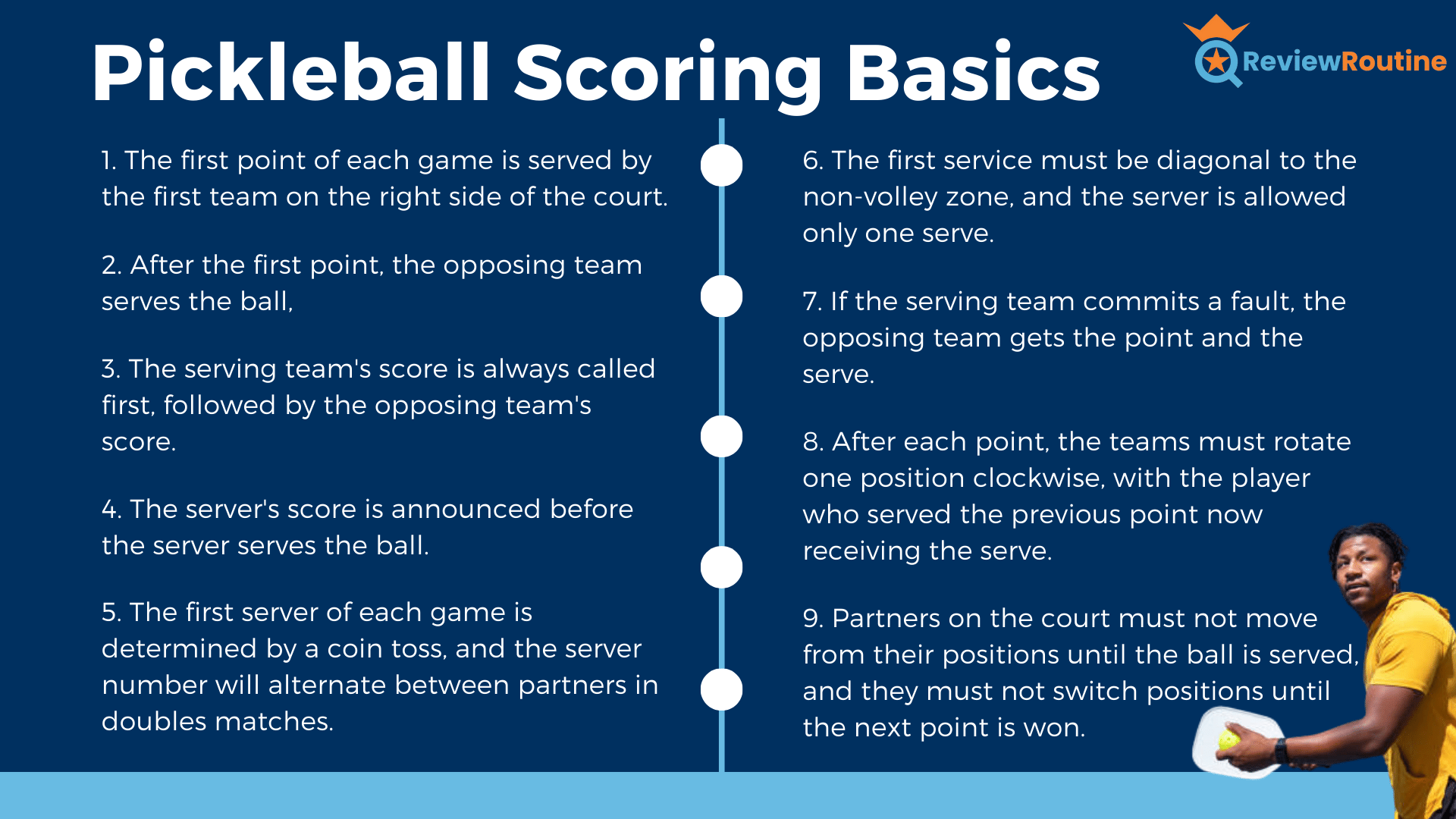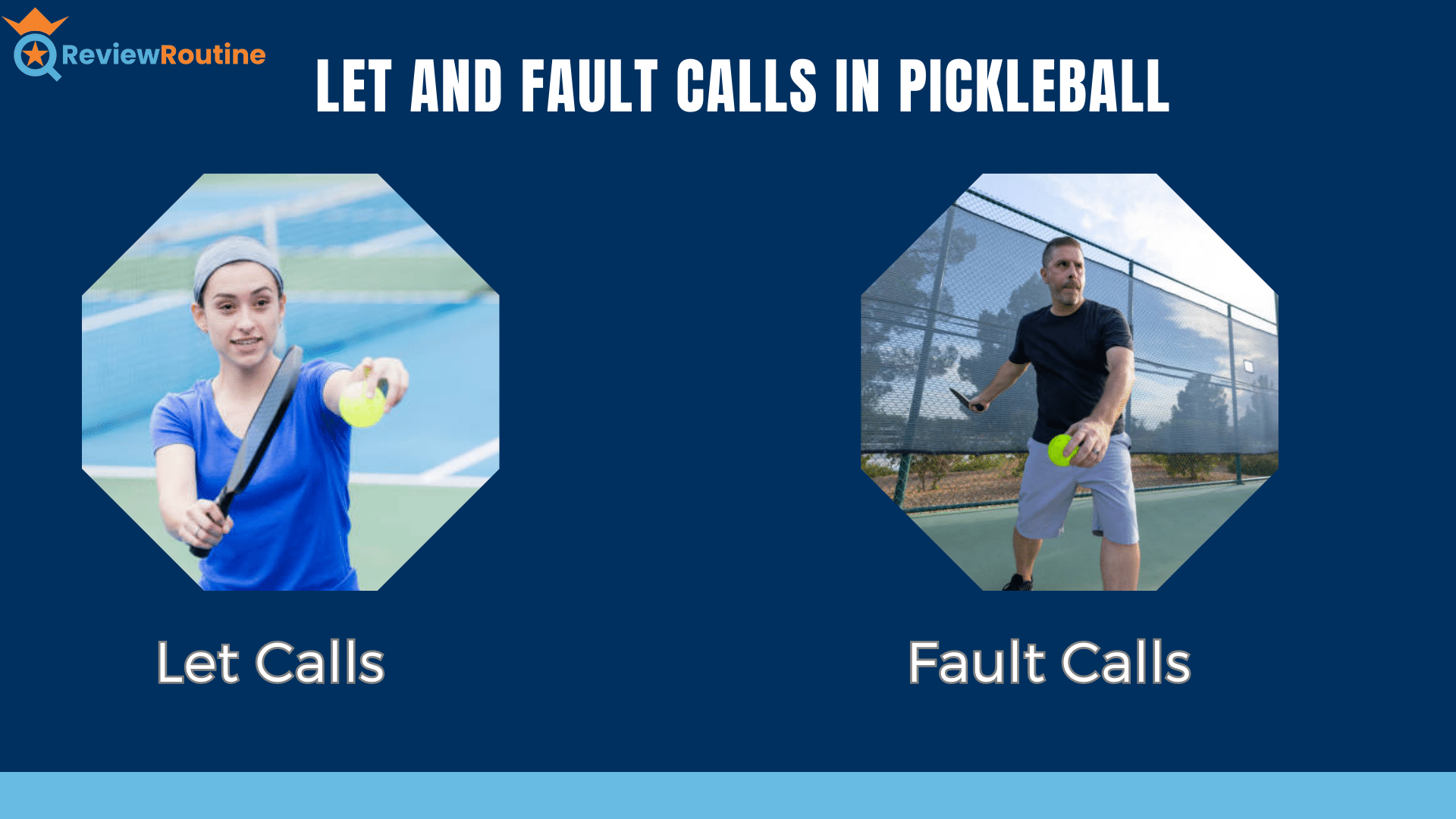How do you keep score in a pickleball game? The rules of keeping score may seem complicated initially, but once you understand the basics, it's easy to follow.
This blog post will guide you through understanding the fundamentals of pickleball scoring so you can sit down to an enjoyable and successful game with your friends or opponents.
Pickleball Scoring Basics
Pickleball scoring is a crucial aspect of the game that every player should understand. The first team to score 11 points wins the game, and the winning team must win by two points. Matches can consist of two out of three games or three out of five games, with the first team to win two games declared as the match winner.
To fully comprehend the scoring system in pickleball, players need to understand the official rules and regulations.
Here are some of the critical rules that govern scoring in pickleball:
- The first point of each game is served by the first team on the right side of the court.
- After the first point, the opposing team serves the ball, and the serving team's score will determine who serves the next point.
- The serving team's score is always called first, followed by the opposing team's score.
- The server's score is announced before the server serves the ball.
- The first server of each game is determined by a coin toss, and the server number will alternate between partners in doubles matches.
- The first service must be diagonal to the non-volley zone, and the server is allowed only one serve. If the first serve is unsuccessful, the server is allowed a second serve. If both serve are unsuccessful, the serving team loses the point, and the opposing team serves.
- If the serving team commits a fault, the opposing team gets the point and the serve. A "let" is called if the serve hits the net and lands in the correct service court. In this case, the server gets another chance to serve.
- After each point, the teams must rotate one position clockwise, with the player who served the previous point now receiving the serve.
- Partners on the court must not move from their positions until the ball is served, and they must not switch positions until the next point is won.
By understanding these rules and regulations, players can improve their chances of winning matches and enhance their overall enjoyment of the game.

Serving and Rotation
Serving is a critical aspect of pickleball, and it's important to understand the rules and regulations that govern this part of the game. The first point of each game is served by the player on the right side of the court.
The server is then allowed to choose which side of the court they serve to. The first service must be diagonal to the non-volley zone, and the server is allowed only one serve. If the first serve is not successful, the server is allowed a second serve.
When a service is successful, the opposing side must hit the ball back to the other side of the court. The team that hit the ball must then rotate in a clockwise direction, with the next player in line receiving the next serve.
After each point, the teams must rotate one position clockwise so that the player who initially served the ball is now receiving the ball. The team that wins the point gets to serve for the next point.
It's worth noting that in doubles matches, the team that serves must alternate after every two serves. In addition, the partners on the court must not move from their positions until the ball is served, and they must not switch positions until the next point is won.

Let and Fault Calls in Pickleball
Pickleball has specific rules regarding when to make "let" or "fault" calls during play. These calls are made to indicate when a point should not count due to a minor disturbance or violation of the rules.
Let Calls
A Let is called when the ball is served and touches the net before landing in the proper service court, and the opposing team is not able to return it. This is referred to as a "let serve" and results in the server being allowed to serve again.
Another situation that may warrant a let call is if there is a disturbance on the court, such as an object rolling onto the court, a player walking through the court during play, or a ball from another court interfering with the game.
In these cases, the players can stop playing and call a lot, and the point is replayed.
Fault Calls
A fault is called when a player violates one of the rules of the game. For example, if the server misses the ball or the ball does not make it over the net, this is a fault and results in the opposing team earning a point.
Other situations that may warrant a fault call include:
- The ball hits the net and does not make it over.
- The ball lands out of bounds.
- The ball touches any part of the server's body or clothing before being hit.
- The server steps on or over the baseline while serving.
- The serving team commits a foot fault by stepping on or over the non-volley zone line during the serve.
Understanding the let and fault calls in pickleball is crucial for players to know when to make the right calls during play. It is important to note that players should always play fair and call out any violations, even if the violation is made by their own team.

Doubles Matches and Winning the Match
In doubles matches, serving works differently than in singles matches. The team that serves alternates after every two serves. Partners on the court must also follow specific rules, such as staying in their positions until the ball is served and not switching positions until the next point is won.
These rules are set forth by the official pickleball scoring rules and are important to follow for a fair game. To win a match, a team must win two out of three games or three out of five games, depending on the match format.
The team that wins the match is awarded one point toward their score in pickleball. If a match reaches a score of 11-9, the team that scored 11 points is awarded one point toward their score. These rules are important to keep in mind when playing in a doubles match.
Additionally, it is worth noting that in doubles matches, the server score is used to keep track of the serving team's score. This is important for ensuring that only the serving team is able to score points while they have the serve.
The starting team is determined by a coin toss or other method agreed upon by the players.

In conclusion
Pickleball is a fun and exciting game that is enjoyed by players of all ages and skill levels. While the game is easy to learn, it's important for players to understand the basics of pickleball scoring in order to fully enjoy the game. Points are won by the first side to score 11 points, with the winning side having to win by two points.
Matches can consist of either two out of three games or three out of five games, with the first side to win two games winning the match. By becoming proficient in the scoring system and rules, players can improve their skills and increase their enjoyment of the game.
FAQs
Why are there 3 numbers in pickleball?
In doubles pickleball, each score is made up of three numbers - the serving team's score, the receiving team's score, and the server number. The first number indicates the number of points scored by the serving team, the second number indicates the points scored by the receiving team, and the third number indicates the server number, either server #1 or server #2. This system helps players keep track of the score, who is serving, and which team is receiving. By using this three-number scoring system, players can stay on top of the game and enjoy a fair and competitive match.
Do you get 2 serves in pickleball?
No, only one serve attempt is allowed in pickleball. However, let serves, which occur when the ball hits the net and lands in the proper service pickleball court, are allowed and do not count as a fault.
How many sets do you need to win in pickleball?
In pickleball, matches are played in a best two-out-of-three format, so players or teams need to win two sets to win the match. If a player or team wins the first two sets, the match is over. However, if each player or team wins one set, a third set is played to determine the winner of the match.
What does 002 mean in pickleball?
The first number indicates the score of the serving team, the second number indicates the score of the receiving team, and the third number indicates the server number. When the score is announced as "zero, zero, two" or "0-0-2," the serving team has no points, the receiving team has no points, and the server number is 2. This is the typical pickleball beginning score.
What is the 10-second rule in pickleball?
The 10-second rule in pickleball is a rule that requires the server to serve the ball within 10 seconds of the score being called. If the server fails to serve the ball within this time limit, they are called for a fault, and the service is awarded to the opposing team. The rule is designed to keep the game moving and prevent excessive delays between serves.
What are illegal serves in pickleball?
Illegal serves in pickleball include:
- Foot faults: Touching or crossing the baseline while serving.
- Faults in ball contact: Not hitting the ball with a paddle in a clean stroke or not hitting it at the proper height (below the waist) on the serve.
- Serving to the wrong court: Serving to the wrong side of the court or hitting the ball out of bounds.
- Landing in the non-volley zone: The ball must not land in the non-volley zone, which is a 7-foot area on each side of the net.








